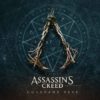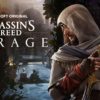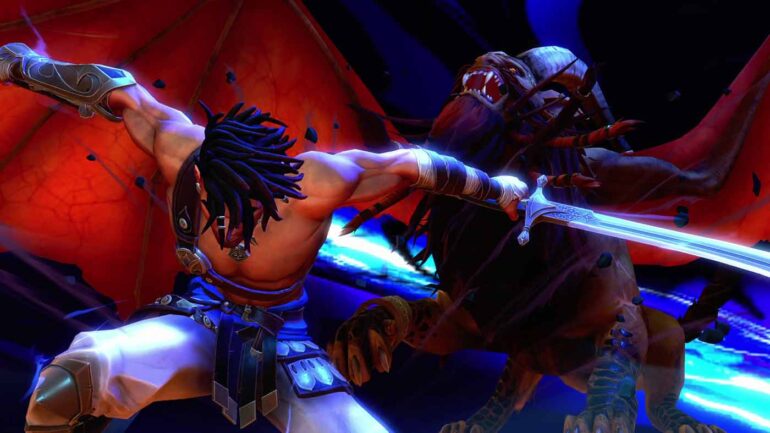As a fan of pretty much everything Ubisoft has done with the Prince of Persia franchise (including the underappreciated 2008 reboot), I’ll admit that the reveal of Prince of Persia: The Lost Crown threw me somewhat. There’s certainly a precedent for a side-scrolling platformer entry in the franchise, given that’s exactly where it all began, but going purely off of that initial trailer I wasn’t convinced that a metroidvania-esque adventure through a fantastical Persia is what fans would want from a brand-new Prince of Persia game.
After spending nearly four hours with The Lost Crown and chatting with Ubisoft Montpellier’s Game Director, Mounir Radi though, my mind is made up. This is a game that both franchise and genre fans should have squarely on their respective radars for early next year.
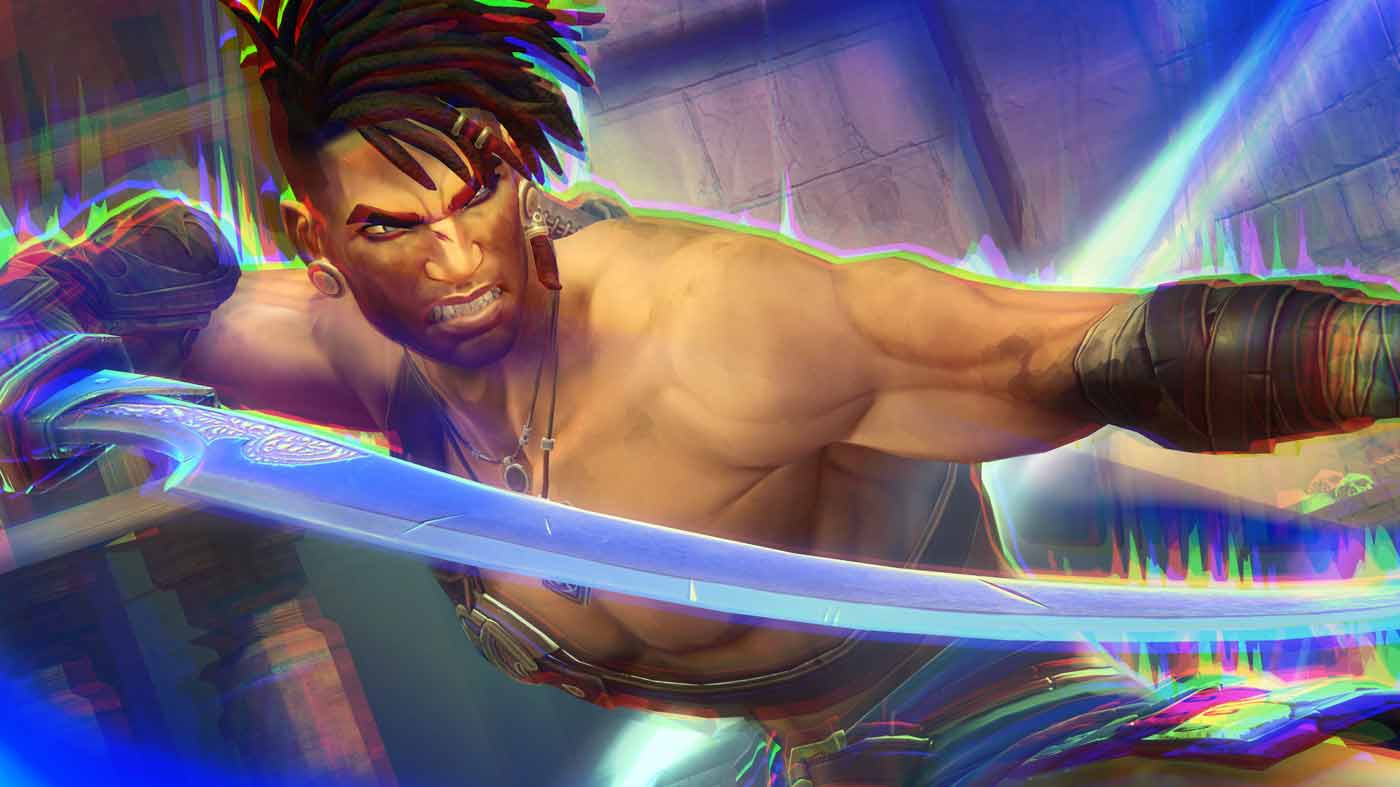
My time with the game started right at the beginning, introducing the game’s playable protagonist, Sargon, along with the rest of the “Immortals,” a band of warriors that Persia’s royal family has called upon to thwart the invading Kushan empire. After taking out a Kushan captain, Sargon is decorated with an award, but while he and the rest of the Immortals celebrate victory one of their own kidnaps Ghassan – the Prince of Persia – and spirits him away to an ancient holy land atop a great mountain. Rescuing the prince and making sense of this betrayal forms the game’s core goal, at least for now, and so with a quick tutorial out of the way I’m set out to explore Mount Qaf.
Like any good metroidvania, what that boils down to is exploring a sprawling, 2D map full of intricately-winding pathways and rooms that unravel both as you move through them and as you acquire new methods of traversal and interaction to push further out into new areas. Even in just these early hours, I made pretty decent ground through a number of visually-diverse areas from sand-blown temples to dank dungeons and overgrown forest areas all tied together by ancient stonework and huge mechanisms. While I obviously don’t know the full extent of it, it seems the map in its entirety will be pretty substantial in both size and density to accommodate what’s supposedly a 15-20 hour journey.
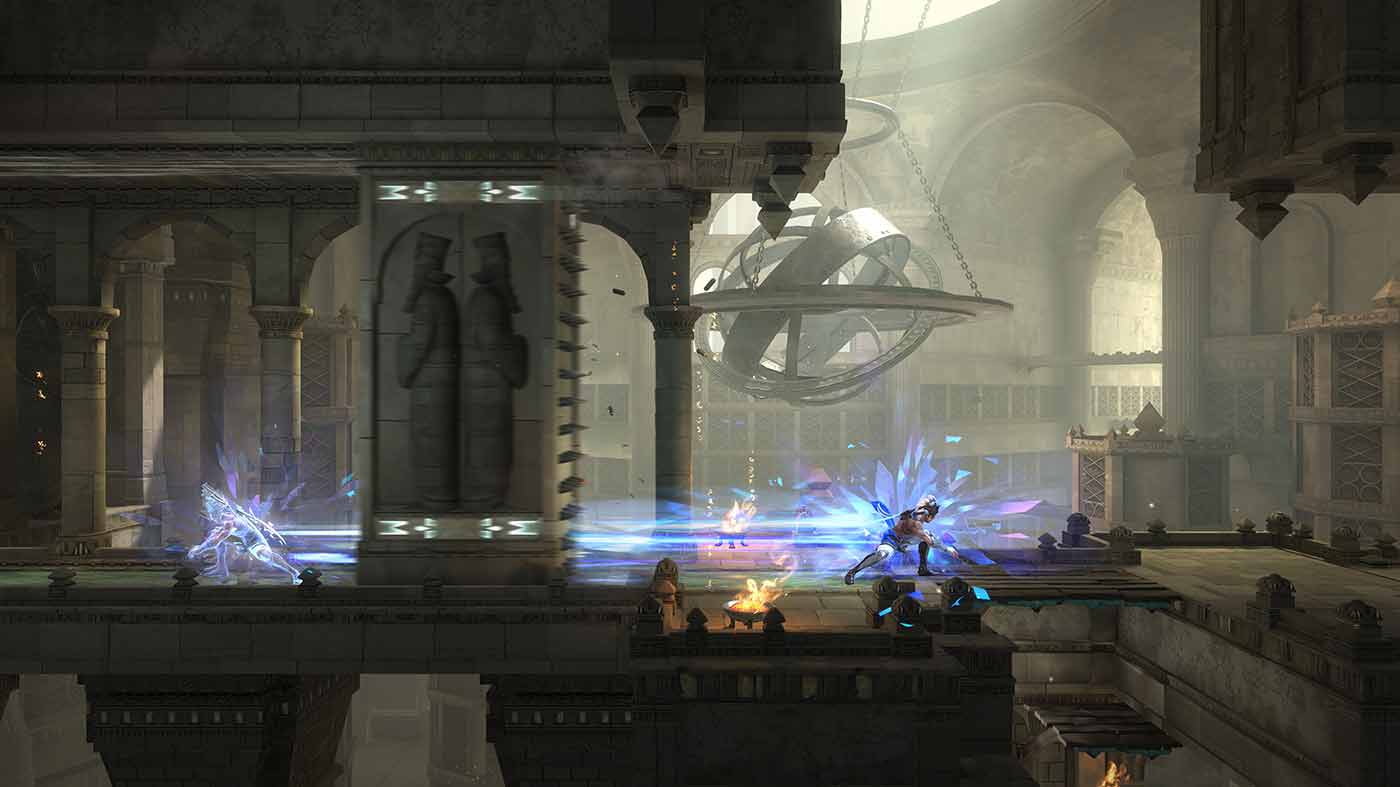
Getting around these distinct environments immediately feels very typical of a Prince of Persia game with Sargon able to run, jump, swing, slide, climb and more with relative ease and speed. Naturally, Mount Qaf is designed to accommodate these acrobatics and offers up a lot of really fun platforming even before you start to accumulate more abilities. Those who enjoyed the movement and environmental puzzles in the 3D series entries will feel right at home here, even with the shift in perspective.
Of course, those games also introduced time-bending mechanics that would become a defining feature, and although you can’t rewind time to escape an unfortunate death in The Lost Crown (that I know of), those time manipulation elements are still here – only in the hands of the game’s antagonist. What this means for players and Sargon is plenty of mystical, magical and mind-bending challenges through the various environments, enemies and set piece moments you’ll encounter. The studio says that making the titular Prince the rescue target and putting the iconic time powers in the hands of the enemy were important decisions in making the game feel familiar to fans while also establishing Sargon as a fresh protagonist with his own journey and playstyle.
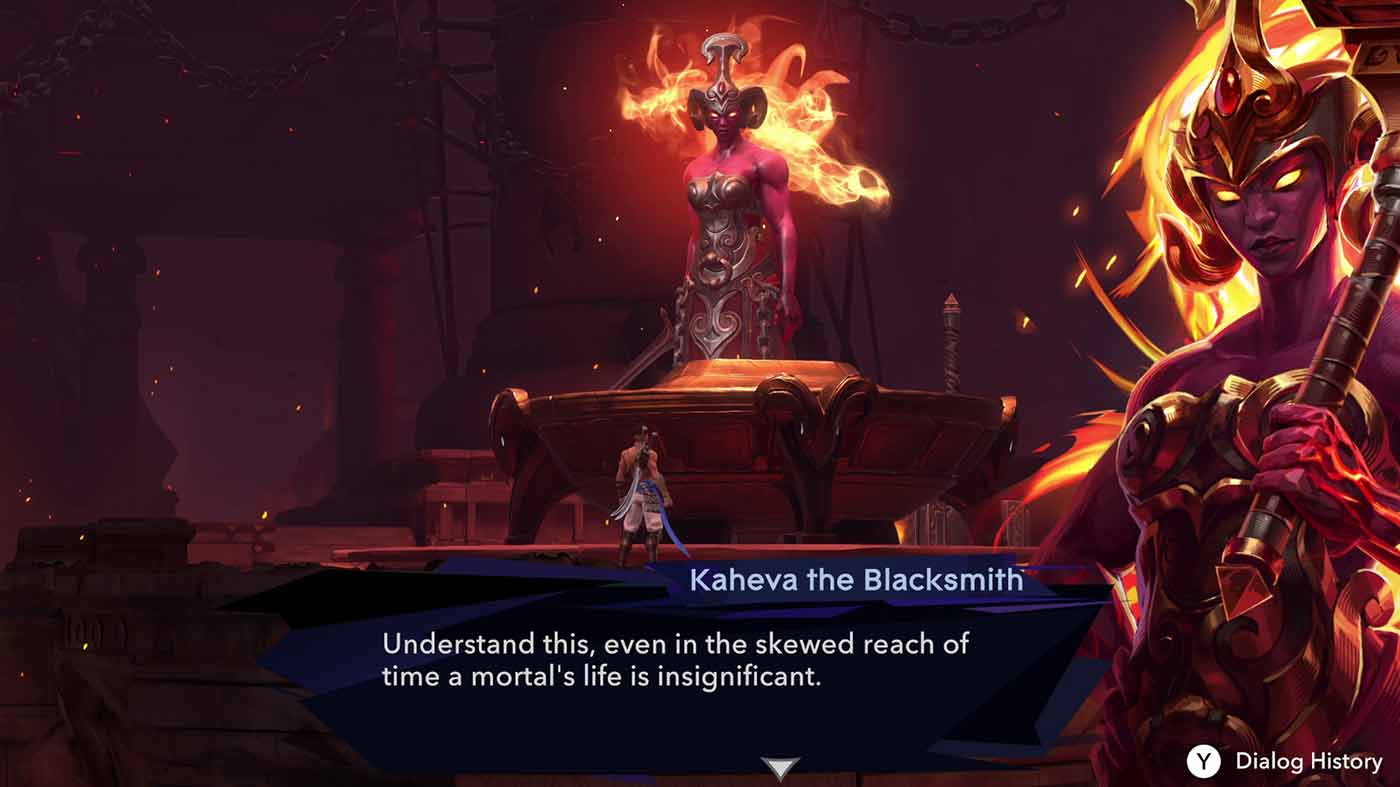
“That’s how Sargon is born,” Radi explains. “And because we wanted to tell the story of a young and merciless warrior haunted by the question ‘what does it take to be strong?’, we took a lot of inspiration from Miyamoto Musashi, the legendary samurai, for his narrative trajectory.
“Design wise, Sargon is the embodiment of the wind. His design, his way of moving and fighting is a translation of this concept…. Even his nickname, the Rashabar is the name of a referenced wind which literally means “black wind” (aka the one bringing bad luck).”
And talking of combat inspirations, one of the biggest takeaways from my time with The Lost Crown so far is how fast, fluid and incredibly satisfying combat is even with just Sargon’s basic moveset. The studio has taken an almost-fighting game approach that still pays respect to what it calls the “choreographic” combat of the 3D games. Sargon moves around the space with a controlled grace and player input is treated with immediacy, making it easy to flit about the place, cancel in and out of abilities to mix up your own combos and react at a moment’s notice.
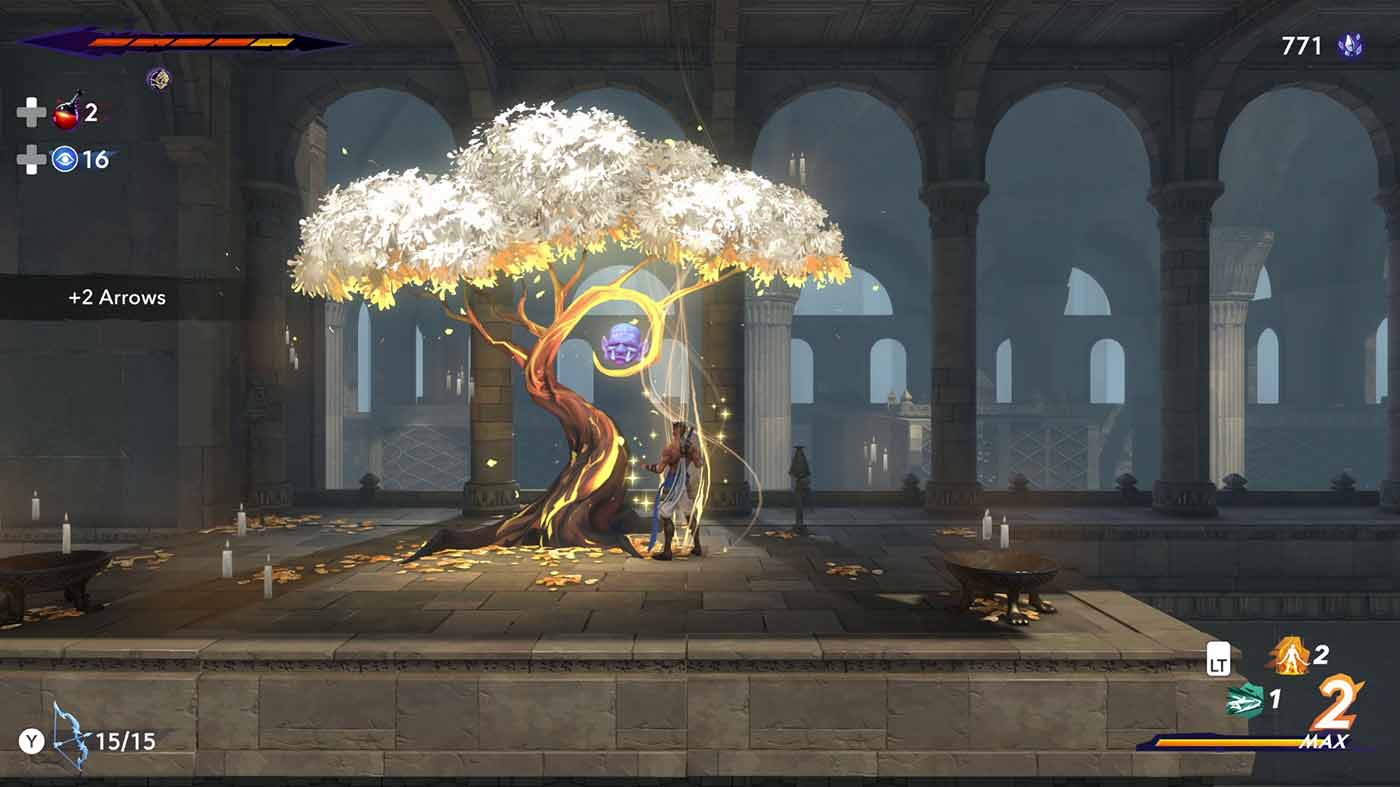
As Sargon began to gain new abilities, I found myself eager to experiment and see what kinds of ridiculous strings of attacks I could pull off and remain untouched myself through sheer acrobatics, and the game continued to deliver. Another neat fighting game-inspired element comes via the ability to unleash special moves that chew up varying portions of a special gauge, which builds up quickly enough but still forces you to weigh up spending it all on a big move or conserve chunks for emergency situations.
These came in especially handy in a handful of thrilling boss encounters, of which most I felt were pitch-perfect in terms of challenge, length and mechanical interest. Even as my ability to time parries failed me repeatedly in one particular fight, I kept coming back for more and honing my skills until I overcame it. There’s a whole ecosystem of skills and gear in place to help you get stronger and face greater challenges, and the Souls-esque Wak-Wak trees that act as checkpoints which fully heal Sargon but also respawn any regular enemies you’ve already dispatched.
Thankfully, there’s no need to beat your head against a wall to surmount obstacles in The Lost Crown with a whole host of accessibility options to smooth out the experience. Whether you want to play the game in a Guided Mode to have it signal and record points of interest in the environment, extend the window of timing for parries or any other number of useful features, Ubisoft Montpellier looks to have done the groundwork to an exemplary degree when it comes to making this game approachable for players of all kinds.
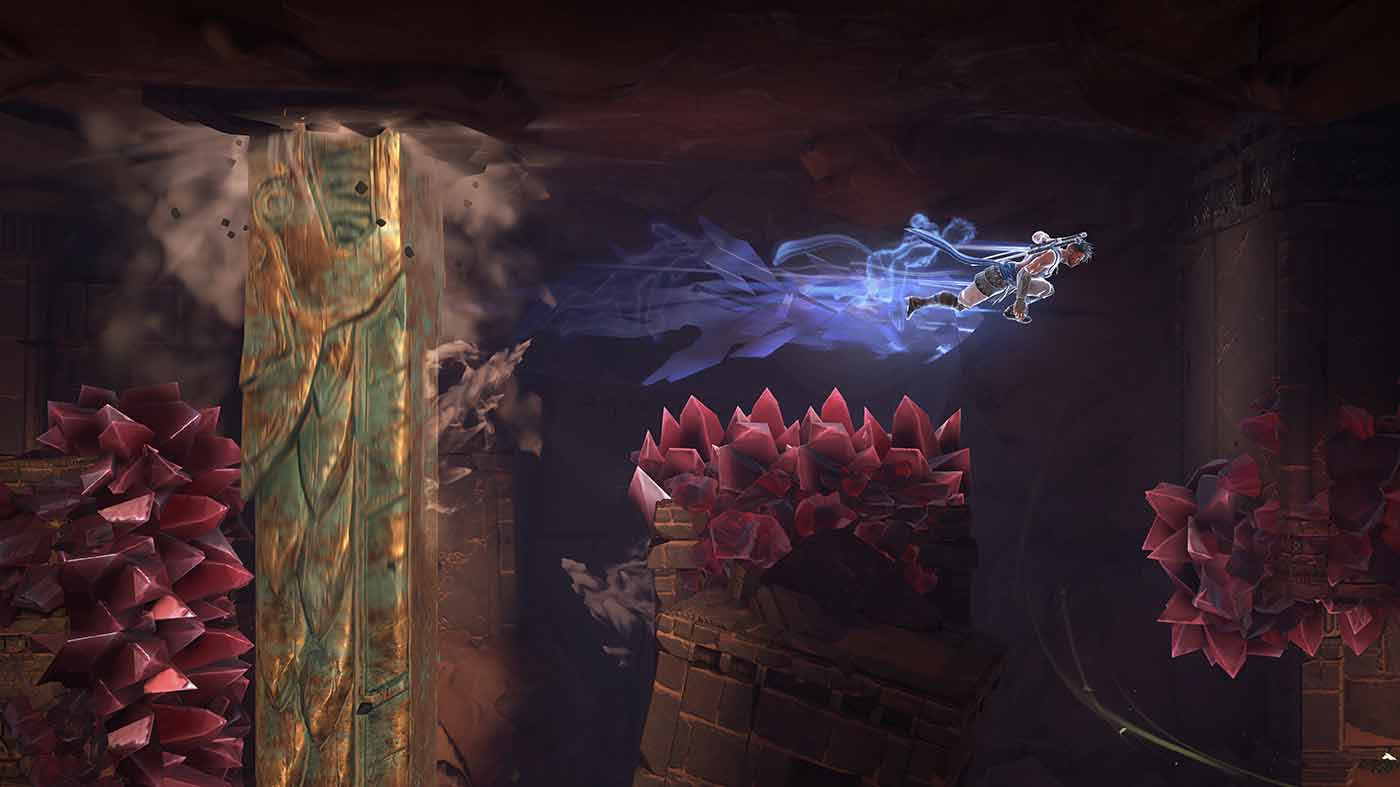
“Since the very beginning we never had any doubt on the fact Prince of Persia: The Lost Crown would be a game that respects players skills and cleverness, without leaving anybody behind, the Game Director described. “I remember a bunch of conversations with people of my team saying that they enjoyed a specific game, but they were forced to quit because, while they knew exactly what they had to do to overcome a specific challenge, they were facing a skill barrier without any option to skip them.
“All players do not seek the same things when they play a game. Sometimes, they just wish to enjoy a good story and lore. We should always give them a chance to enjoy a game and its content from start to end since they gave their trust to us.”
When thinking of accessibility, one feature really stood out to me in my demo and that’s the ability to take a snapshot of the environment at any time and place that image on a marker in the world map, to help keep track of any impassable obstacles or inaccessible secrets you might want to come back to after you’ve gained new abilities or skill. It’s super novel, and useful, and for someone like myself with genuine struggles as far as short-term memory goes it’s a massive boon combined with those Guided Mode features.
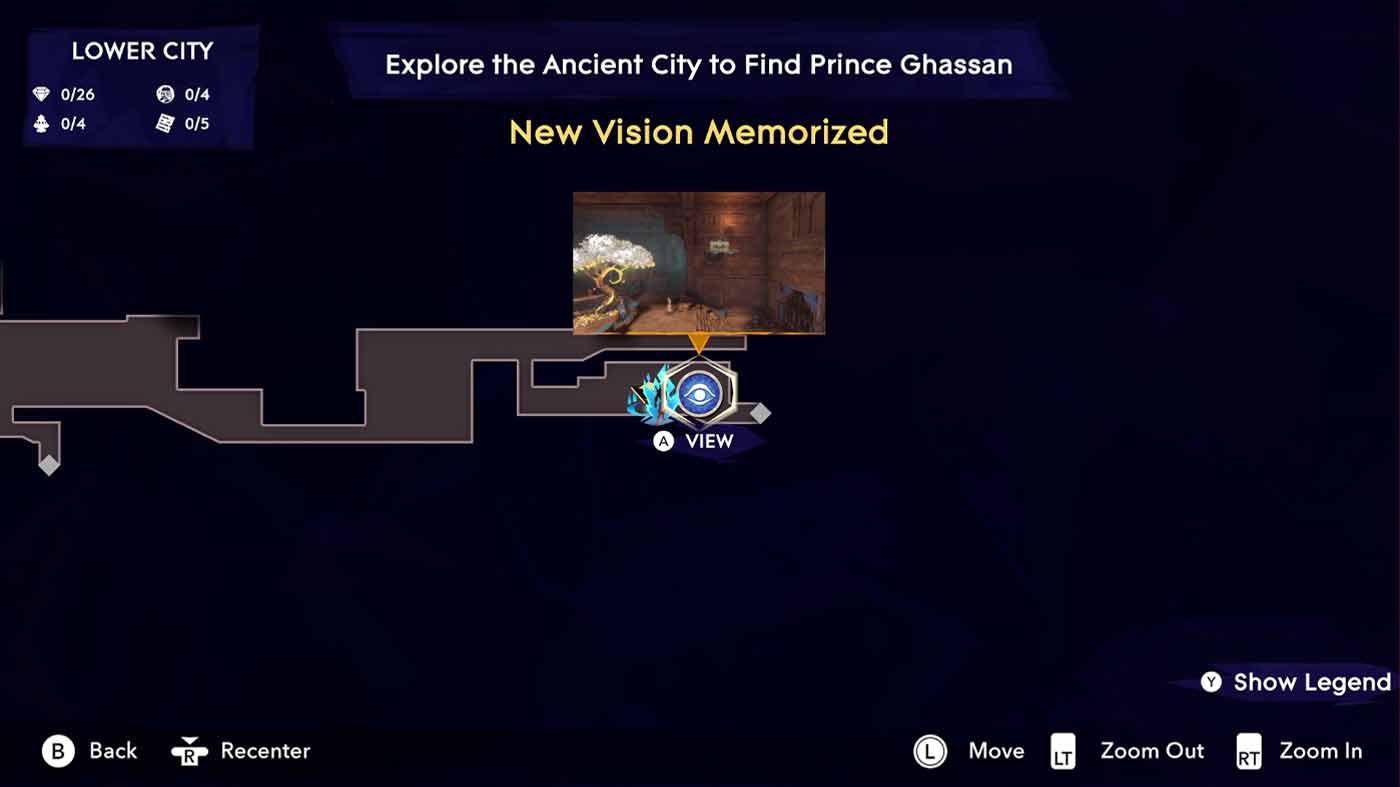
“…we played A LOT of metroidvanias, old and modern ones to benchmark their approach of the genre,” Radi told me, “And above all, their design on the guidance topic, because this is the toughest challenge when it comes to create an immersive world where being lost is a promise and not a punishment. Each title has its strengths and weaknesses, and we tried as much as possible to focus and find new tools to elevate the genre. That’s how the “Memory Shards” feature came up on the table, to solve a memorisation issue.”
With all of this it still barely feels like I’ve scratched the surface of what The Lost Crown has to offer, as well. In speaking to the team, I’ve been told that where my demo ended does represent a pretty significant tonal shift (and the events I did see certainly would speak to that), and even gotten hints at some incredibly cool-sounding later abilities.
One, as Radi described to me, will let Sargon “capture” elements from the world and release them at any point later. An example has the player capture a bomb thrown by an enemy to then go and release it on a destructible wall elsewhere in the environment, or even capture an entire enemy and then release them during a boss fight for some added assistance/a de facto meat shield.
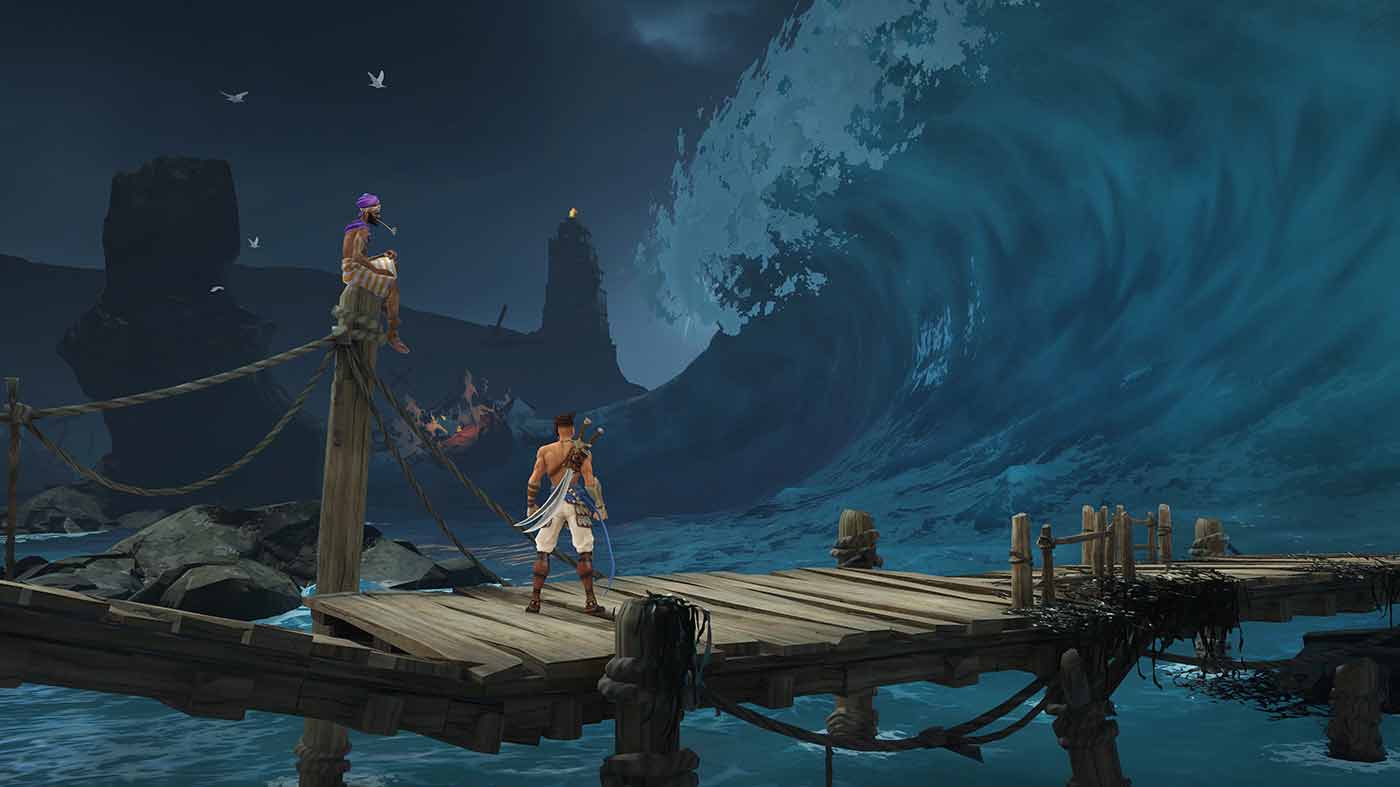
This is all without anywhere near enough mention of how fantastic The Lost Crown looks as well, underpinning its excellent platforming and combat with fluid performance and sumptuous, sprawling environments that remain easy to read in the heat of the moment and sport a striking and cohesive art style with tons of personality. The studio’s gone all-in stylistically, with some really cool anime-esque canned sequences in bigger fights that I don’t think I could possibly tire of once I have the full game in my hands.
With just a handful of hours under my belt, I’m absolutely champing at the bit to see and play more of Prince of Persia: The Lost Crown. Ubisoft Montpellier seems locked into something special here, and however good it looks from the outside or sounds in concept I can promise that it plays even better. Launch can’t come soon enough.
Prince of Persia: The Lost Crown is launching on PS5, PS4, Xbox Series X|S, Xbox One, PC and Nintendo Switch on January 18th, 2024. Amazon has pre-orders available for $69.
